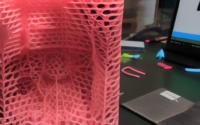Improving Traffic Safety with Vehicle-to-Vehicle Communication Tech
Improving Traffic Safety with Vehicle-to-Vehicle Communication Tech
Introduction to Vehicle-to-Vehicle Communication Technology:
Vehicle-to-Vehicle (V2V) communication technology is a wireless communication system that allows vehicles to communicate with each other in real-time. V2V technology enables vehicles to share important safety information, such as their speed, location, and direction of travel, to help prevent accidents and improve overall traffic safety. By exchanging data with nearby vehicles, V2V systems can provide drivers with advanced warning of potential dangers, including collisions, harsh braking, and other hazardous situations.
How Does V2V Communication Work?:
V2V communication works through dedicated short-range communication (DSRC) technology, which uses the 5.9 GHz band to transmit and receive wireless signals between vehicles. Each vehicle equipped with a V2V system continually broadcasts its status information, such as speed and position, to other nearby vehicles. These broadcasts are sent out multiple times per second, ensuring that the information exchanged is up-to-date and accurate. When a vehicle receives data from another vehicle, its onboard V2V system analyzes the information to determine if there is a potential safety risk and alerts the driver accordingly.
Benefits of V2V Communication Technology:
V2V communication technology offers several key benefits that can significantly improve traffic safety. One of the primary advantages of V2V systems is their ability to provide real-time warnings to drivers about potential hazards that they may not have otherwise been aware of. By alerting drivers to dangers like sudden stops or lane changes, V2V technology can help drivers react more quickly and avoid accidents. Additionally, V2V communication can enhance existing safety features in vehicles, such as automatic emergency braking systems, by providing them with more accurate and timely information to work with.
Challenges and Limitations of V2V Communication:
While V2V communication technology has the potential to greatly improve traffic safety, there are several challenges and limitations that need to be addressed. One major challenge is the widespread adoption of V2V systems across all vehicles on the road. For V2V technology to be most effective, a large percentage of vehicles need to be equipped with compatible systems, which can take time to implement. Additionally, ensuring that V2V systems are secure from hacking or malicious interference is another important consideration to prevent misuse of the technology.
Regulations and Standards for V2V Communication:
To promote the widespread deployment of V2V communication technology and ensure its effectiveness, regulatory agencies have developed standards and guidelines for V2V systems. In the United States, the National Highway Traffic Safety Administration (NHTSA) has been actively working to define regulations for V2V technology, including requirements for data security, message content, and interoperability between different vehicle manufacturers. By establishing clear standards for V2V communication, regulators aim to facilitate the integration of this life-saving technology into all vehicles.
Future of V2V Communication Technology:
The future of V2V communication technology looks promising, with ongoing research and development efforts focusing on enhancing the capabilities of V2V systems. One area of interest is the integration of V2V technology with other emerging technologies, such as autonomous vehicles and smart infrastructure. By combining V2V communication with these advancements, traffic safety can be further improved through increased coordination and information exchange between vehicles and the surrounding environment. As V2V communication continues to evolve, it has the potential to revolutionize how we think about road safety and reduce the number of traffic accidents on our roadways.


